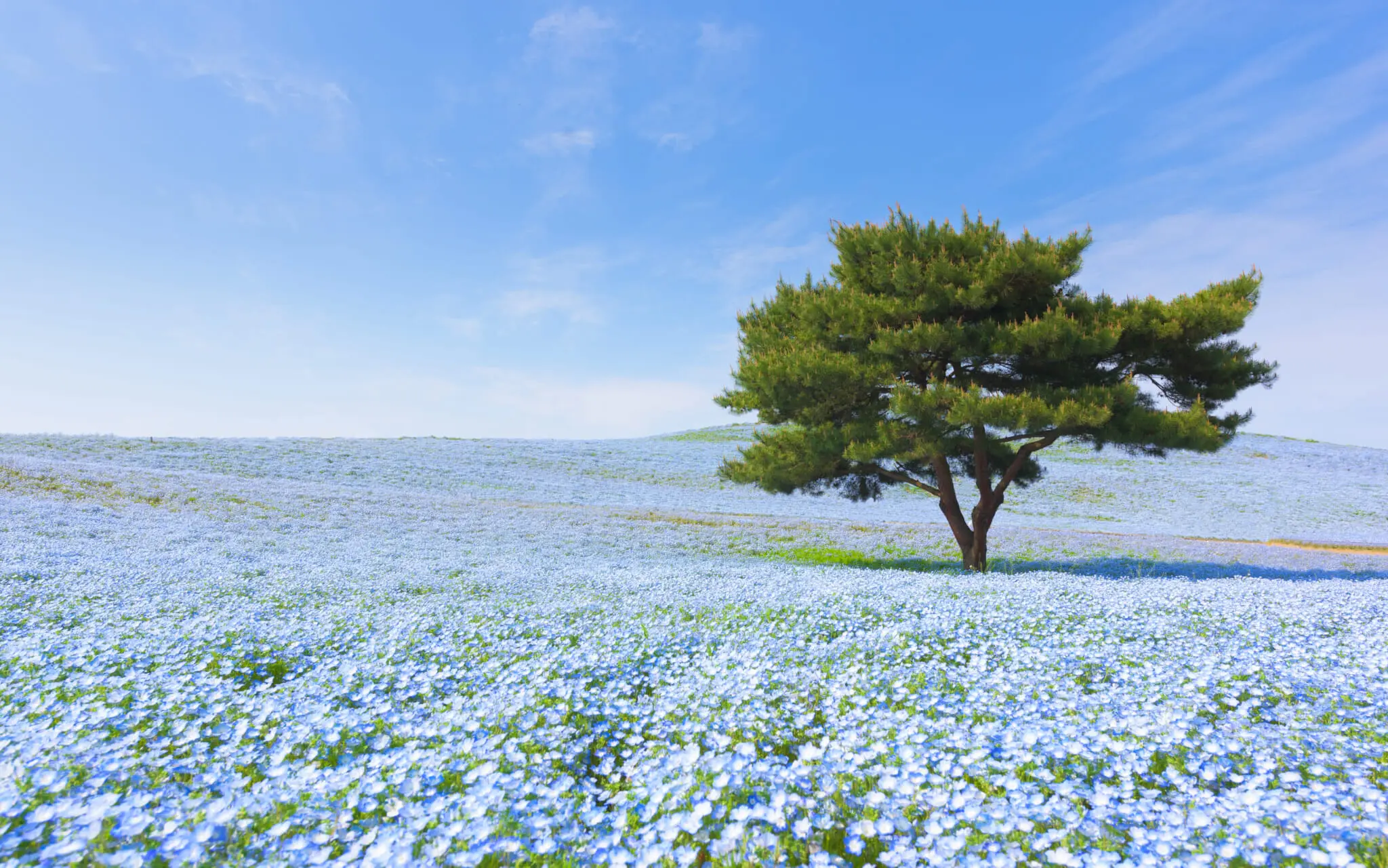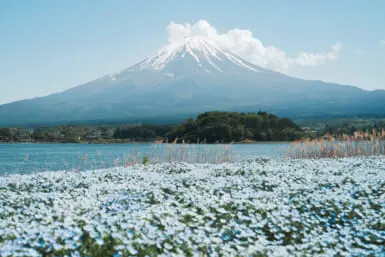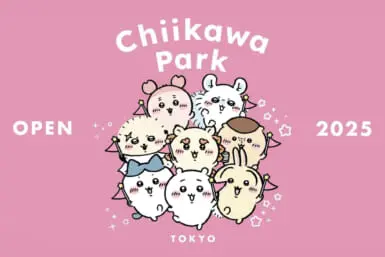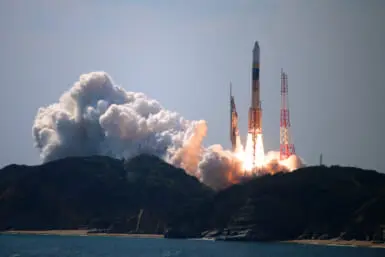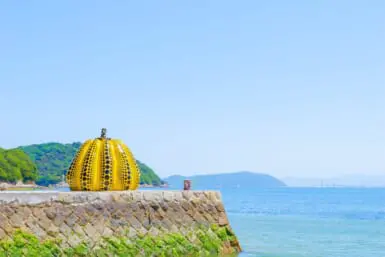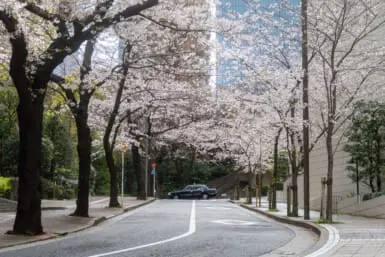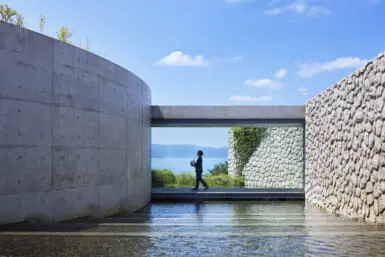Japan’s spring season might be famous for cherry blossoms, but there’s another breathtaking floral phenomenon that’s been stealing the spotlight in recent years — the stunning blue carpets of nemophila flowers. These delicate blue blooms transform ordinary hillsides and gardens into magical landscapes where the boundary between sky and earth seems to vanish. Every spring, flower enthusiasts and photographers flock to parks across Japan to witness these spectacular displays that have become a must-see part of the Japanese spring experience.
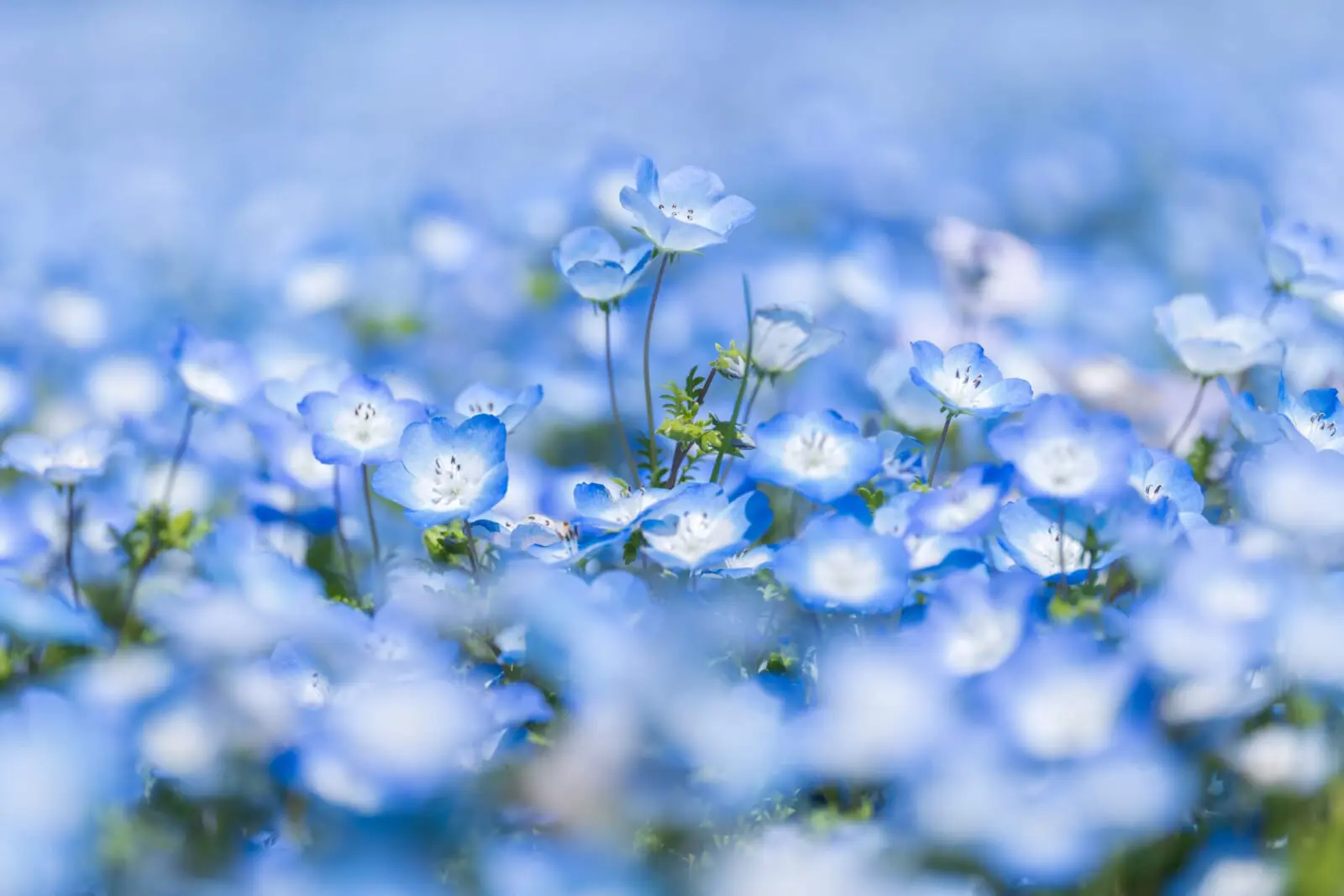
Introducing Nemophila
Commonly called “baby blue eyes” or “California bluebells,” nemophila (Nemophila menziesii) are actually native to North America, particularly California. Despite being imported, these charming, dainty flowers have found a special place in Japan’s seasonal flower calendar.
They grow close to the ground, typically reaching between 10 and 20 centimeters in height, with delicate five-petaled flowers about 2.5 centimeters across. Their most striking feature is that vibrant sky-blue color, often with a white center that gives them an enchanting, eye-like appearance. When planted en masse, they create a breathtaking blue carpet that seems to melt right into the sky above.
Best Times To See Nemophila
In Japan, nemophila typically bloom from late March through to late May, with the most spectacular displays usually occurring between mid-April and early May. The exact timing varies by location and weather conditions — southern regions generally see earlier blooms.
Part of what makes these flowers special is how fleeting they are — the blooming period lasts between three and four weeks at each location. Many parks organize special nemophila festivals to coincide with peak blooming, offering enhanced experiences with special events and extended visiting hours.
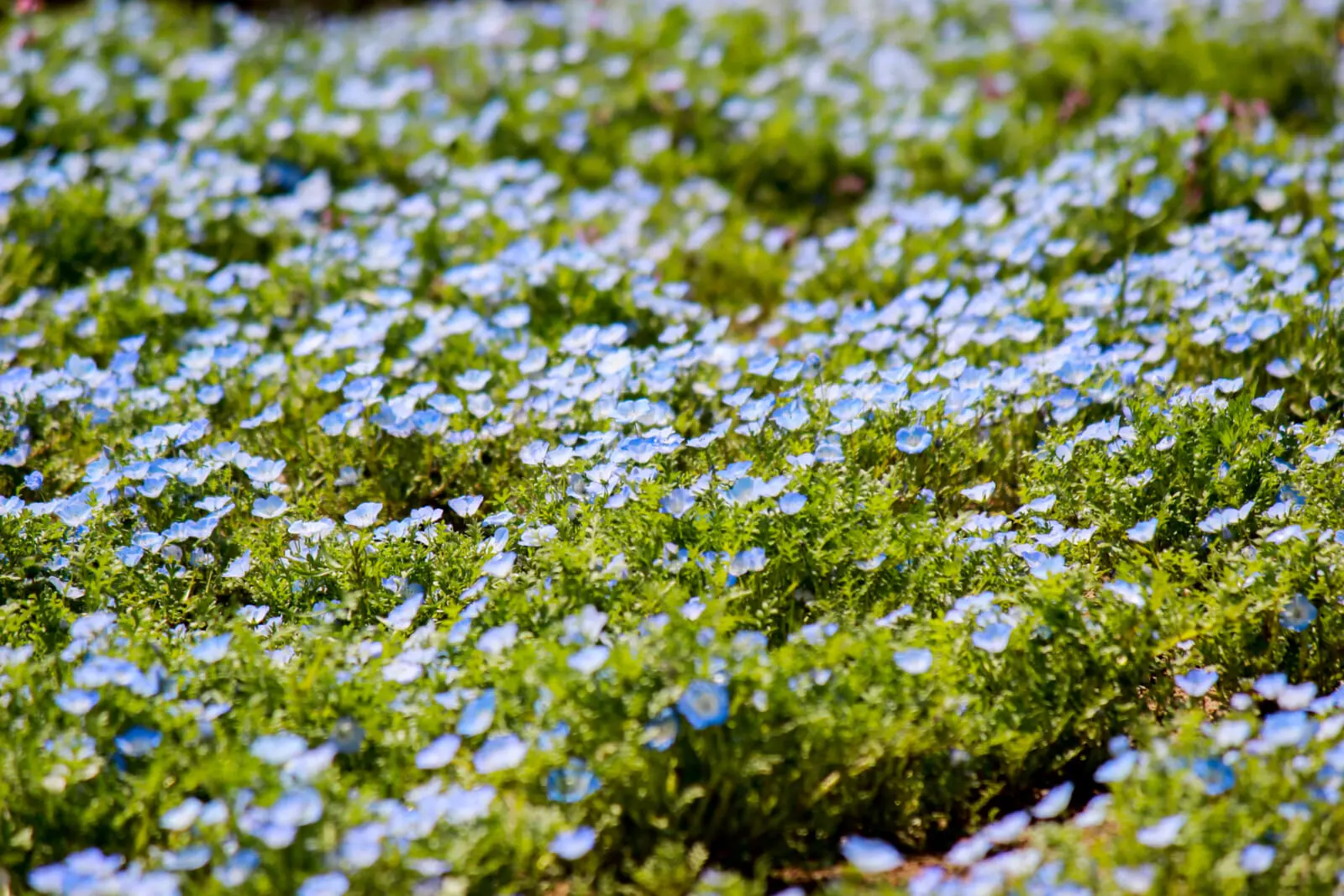
Showa Kinen Park (Tokyo)
Best Spots To See Nemophila in Japan
Showa Kinen Park (Tokyo)
For Tokyo dwellers seeking a blue flower fix without leaving the city, head to the nemophila field near Momiji Bridge. As a bonus, this massive park offers plenty of recreational activities including, barbecue areas, futsal courts and dog runs — perfect for making a full day of your flower-viewing trip. Due to its popularity, especially during peak bloom, it’s recommended to visit on weekdays or early in the day if you want to avoid the crowds. Don’t miss the Showa Kinen Park Flower Festival 2025, which showcases nemophila and tulip fields, as well as seasonal dishes and sweets available in the park restaurants.
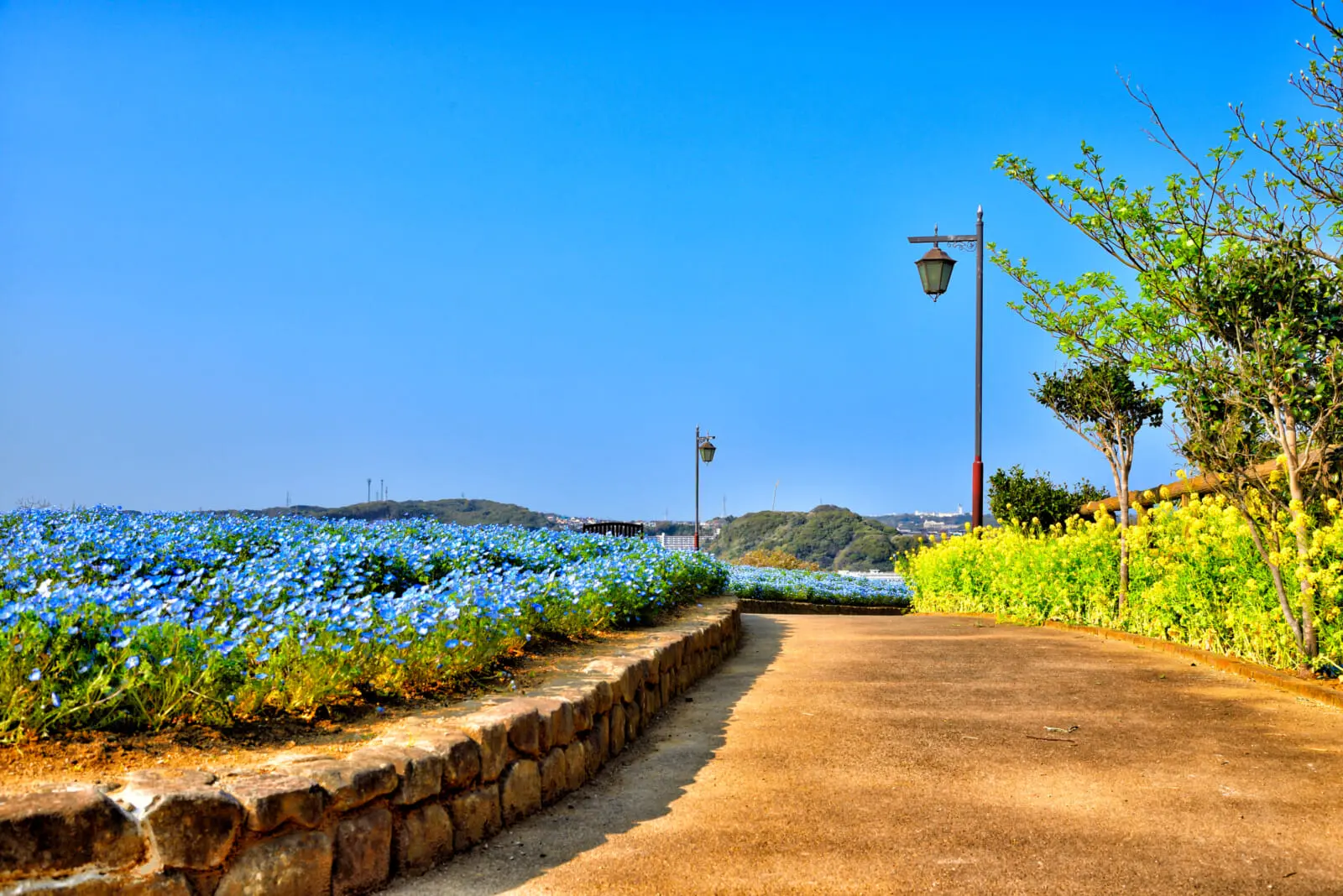
Kurihama Flower Park (Kanagawa Prefecture)
If you’re planning a trip to Yokosuka this spring, don’t miss the park’s Poppy and Nemophila Festival from April 5 to May 25, 2025. Move around the park in the whimsical Flower Train, and if you have kids in tow, the family-friendly attractions such as the adventure playgrounds and the famous Godzilla slide are a must-visit.
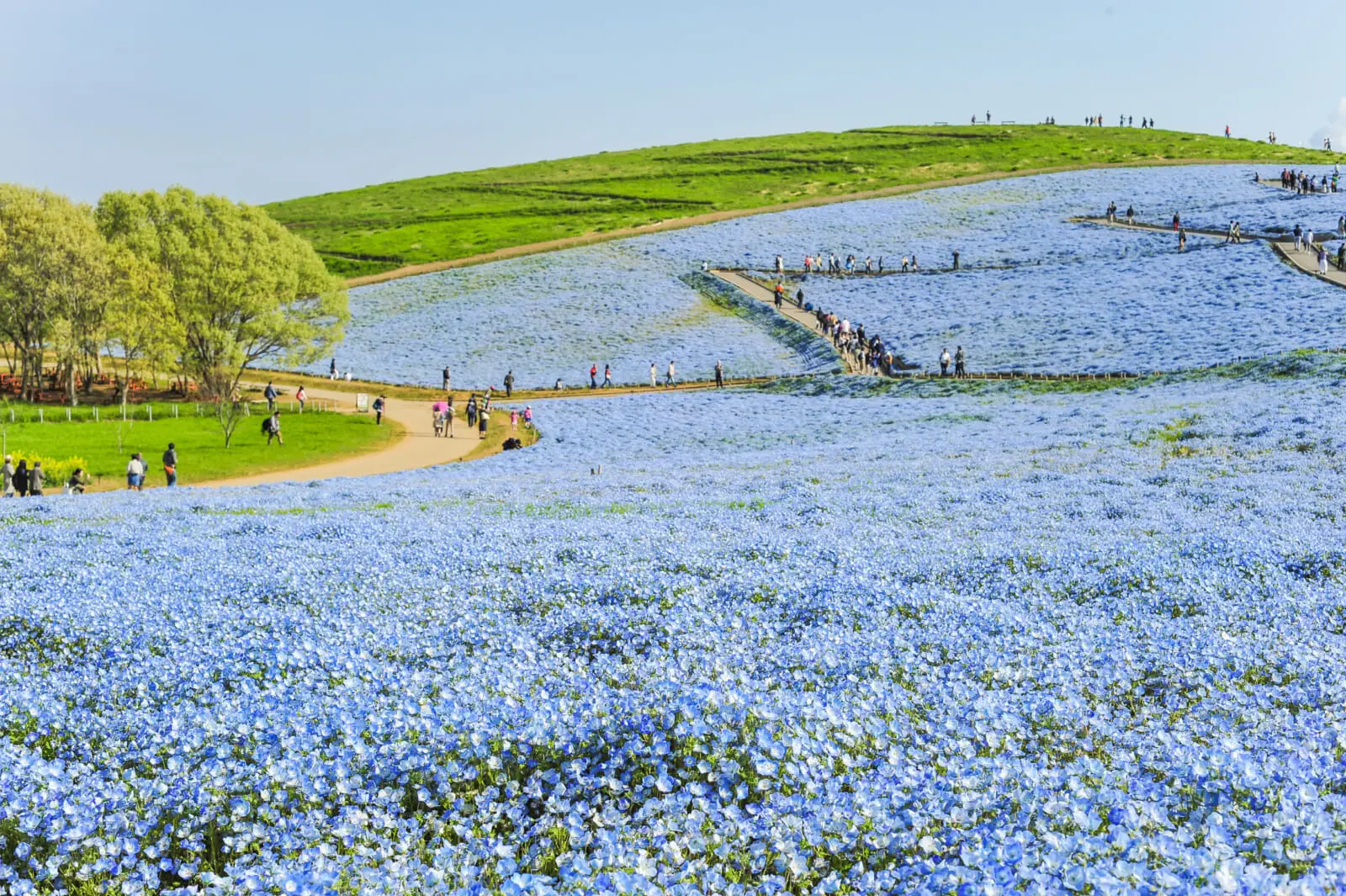
Hitachi Seaside Park (Ibaraki Prefecture)
For possibly the most iconic view of nemophila flowers imaginable, this seaside park is your best bet. The park is home to 5.3 million nemophila flowers that cover more than 4 hectares of Miharashi Hill. They appear to merge with the horizon and the Pacific Ocean on clear days.
The park is usually packed during peak bloom, especially on weekends and during Golden Week, so early morning visits or weekdays are recommended for a more relaxed experience. Don’t miss the park’s blue-themed treats, such as pastel blue ramune soda soft serve ice cream and nemophila-shaped cookies, available only during the flowering period.
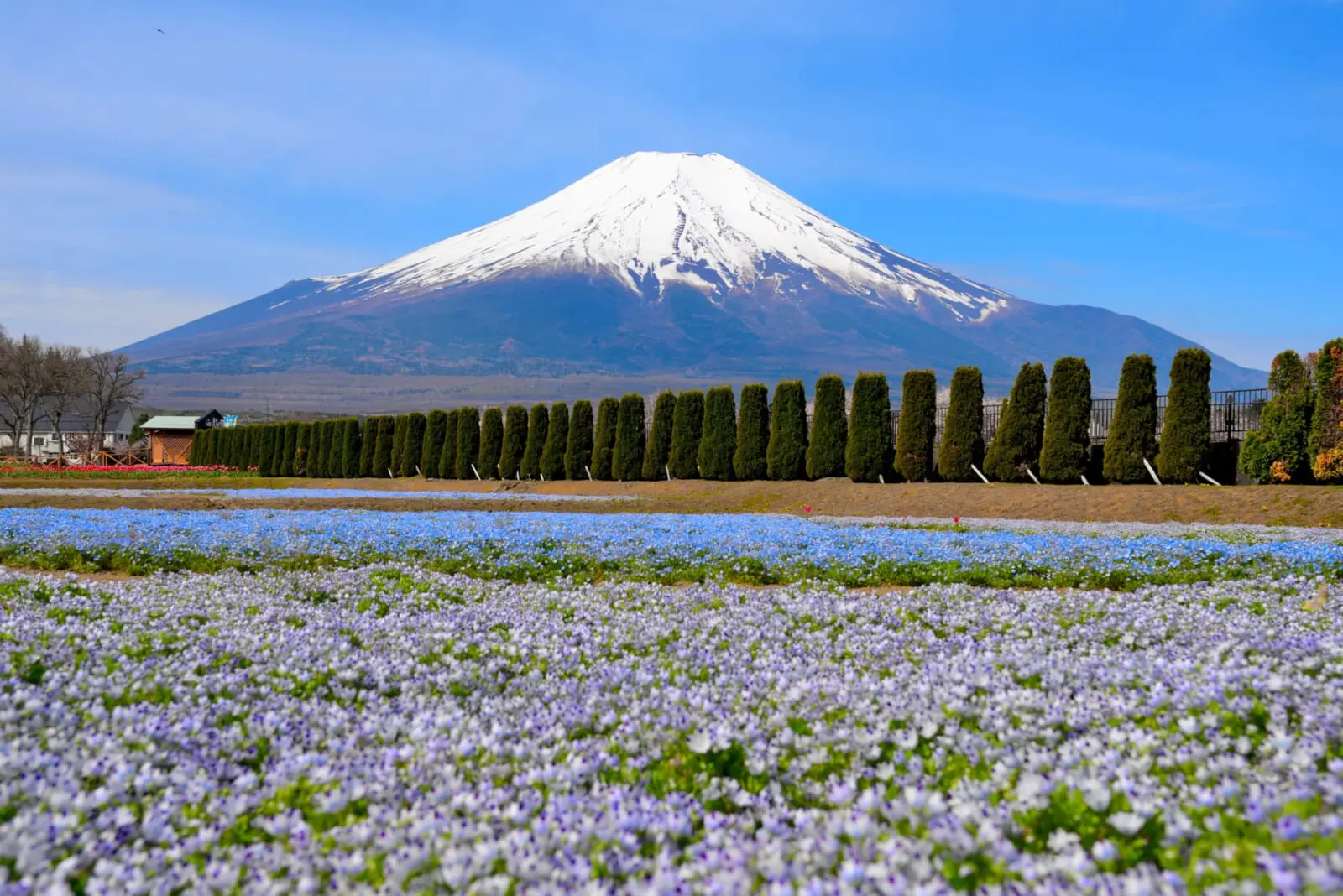
Lake Yamanaka Hananomiyako Flower Park (Yamanashi Prefecture)
Situated at an elevation of 1,000 meters on the shores of Lake Yamanaka, this flower park offers the experience of viewing nemophila blooms with the majestic Mount Fuji as a backdrop. The park’s Seiryu-no-Sato-Lake Garden area features family-friendly water splash zones as well as viewing spots for the stunning Myojin Waterfall. The park itself is quite expansive, so consider renting a bicycle to cover more ground.
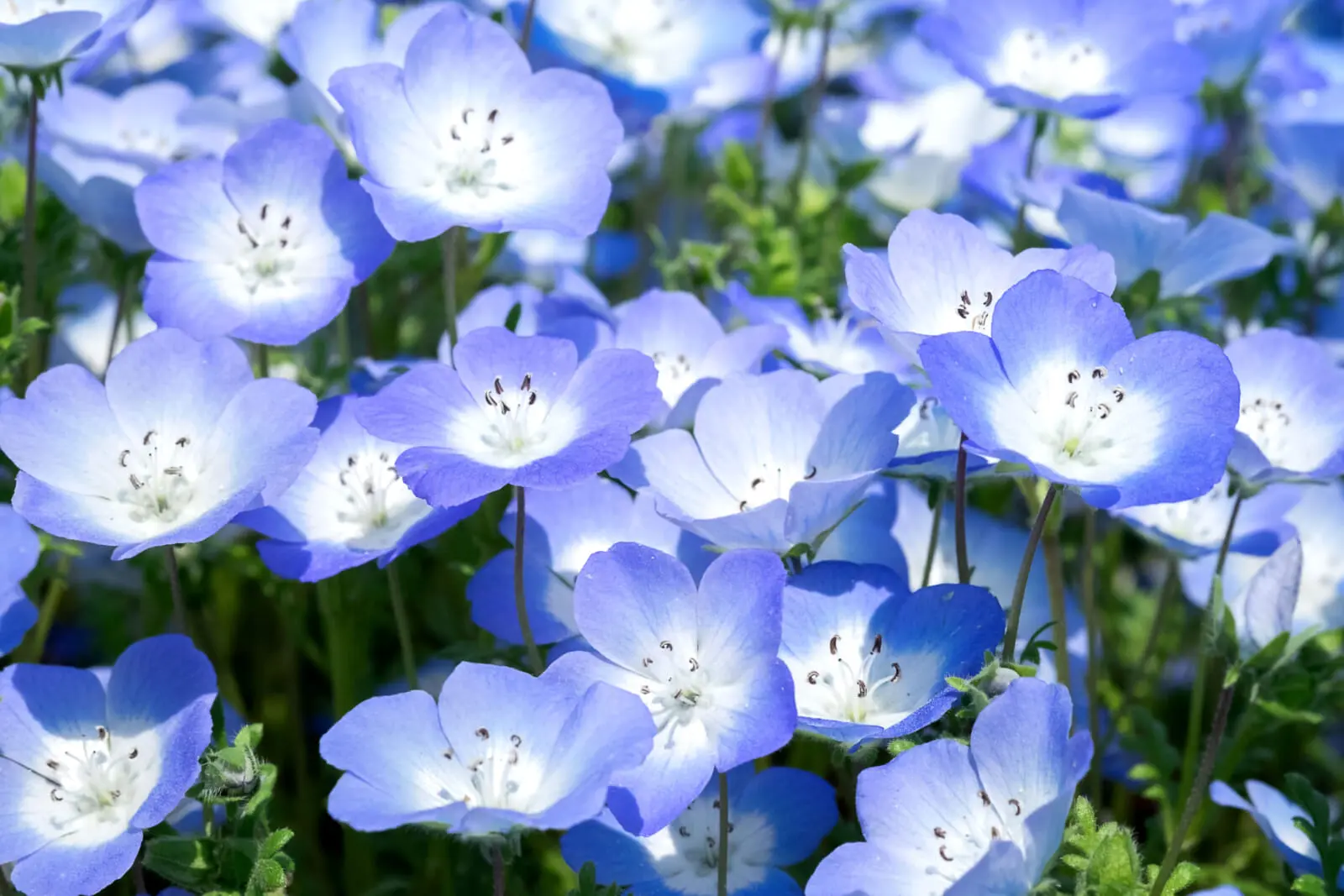
Hamanako Garden Park (Shizuoka Prefecture)
Featuring approximately 300,000 nemophila bulbs, this park’s Flower Plaza transforms into a stunning blue carpet from mid-to-late April. Its 50-meter observation tower provides panoramic views of the blue nemophila fields below, while international gardens, a flower museum and children’s playgrounds offer diverse attractions for visitors of all ages.
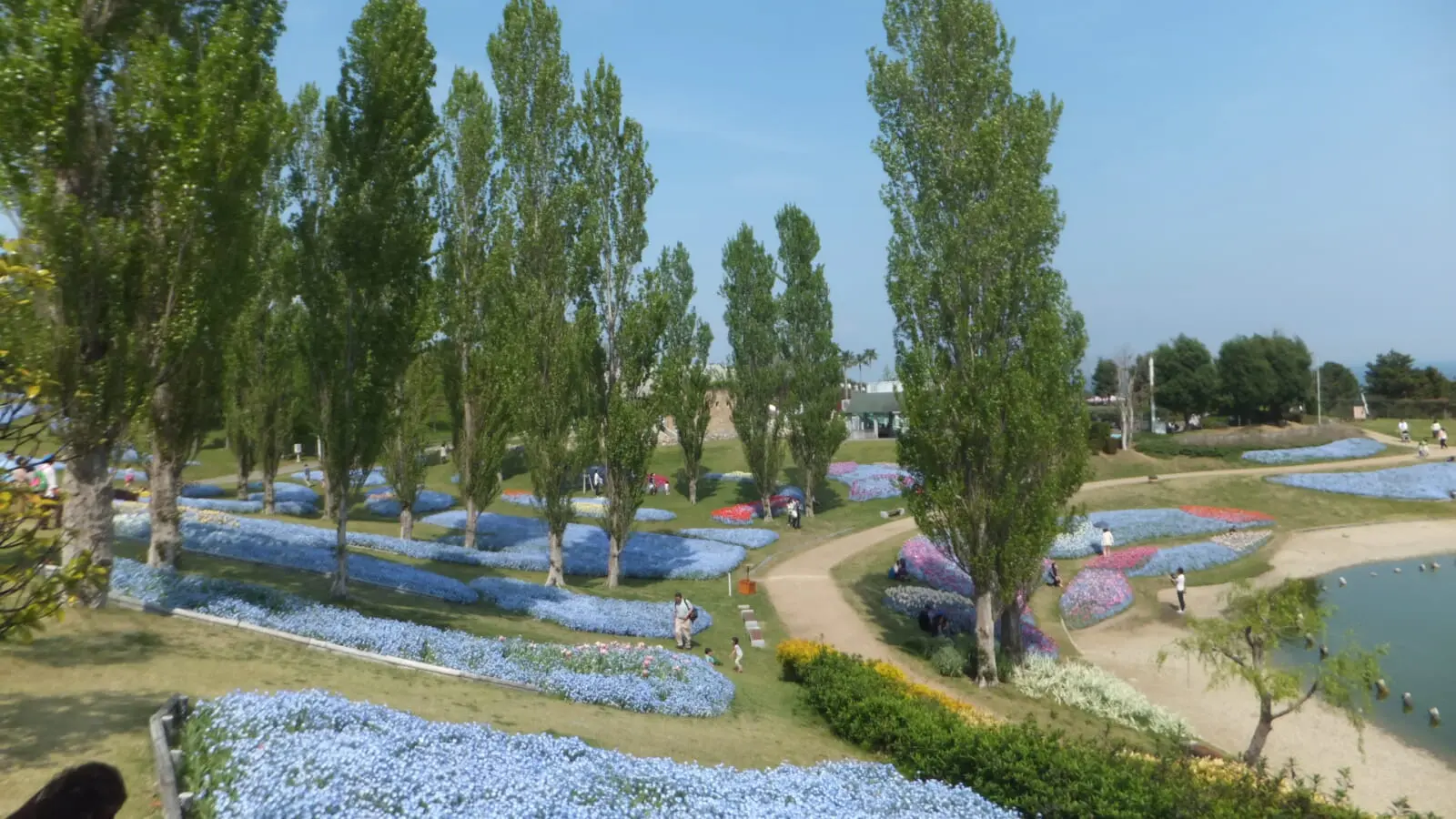
Akashi Kaikyo National Government Park (Hyogo Prefecture)
Thanks to Awaji Island’s mild climate, visitors can enjoy an ever-changing tapestry of seasonal blooms — spring brings 15,000 nemophila bulbs alongside daffodils and tulips, followed by sunflowers in summer, cosmos in fall and Christmas roses in winter. The park offers extensive facilities, including a large playground and water play areas that make it perfect for full-day family outings. For flower enthusiasts, don’t miss the Awaji Greenhouse nearby — one of Japan’s largest greenhouses, designed by renowned architect Tadao Ando. It was renovated in 2021.
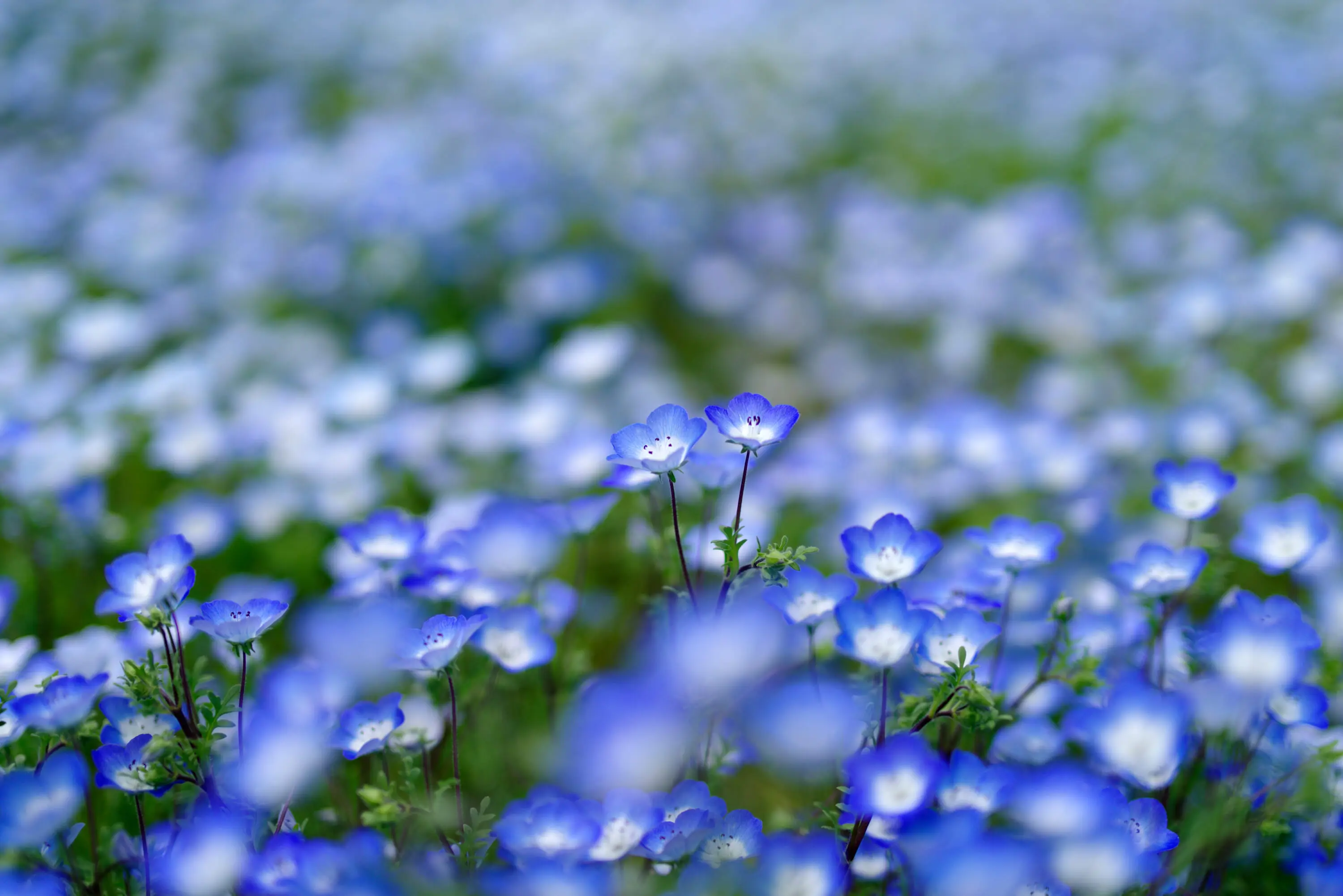
Flower Village Kamu no Sato (Hiroshima Prefecture)
As western Japan’s largest spring flower destination, this delightful spot offers a rare treat — you can simultaneously enjoy delicate blue nemophila fields alongside vibrant shibazakura (pink moss phlox) and bright yellow rapeseed blossoms. The facility itself is also equipped with food courts, shops and activities such as horseback riding, flower picking and stamp rallies for kids.
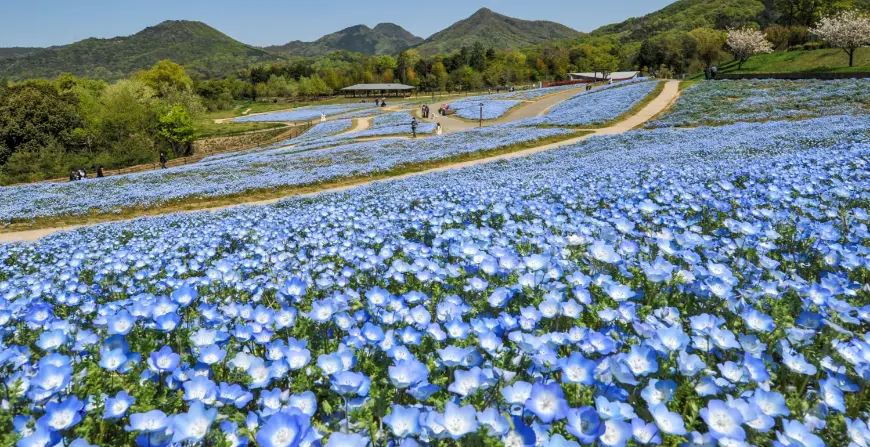
Image courtesy of Sanuki Manno Park
Sanuki Manno Park (Kagawa Prefecture)
Boasting Shikoku’s largest flower fields, this park features seasonal flowers, including mesmerizing nemophila displays from early March through to mid-May. Beyond flower viewing, the park is also equipped with playgrounds, cycling courses and the Shikoku region’s largest RV camping ground. Until May 11, don’t miss the Haru Ranman Festival, which features fun activities such as nature workshops, tea ceremonies and walking tours, coinciding with the nemophila displays.
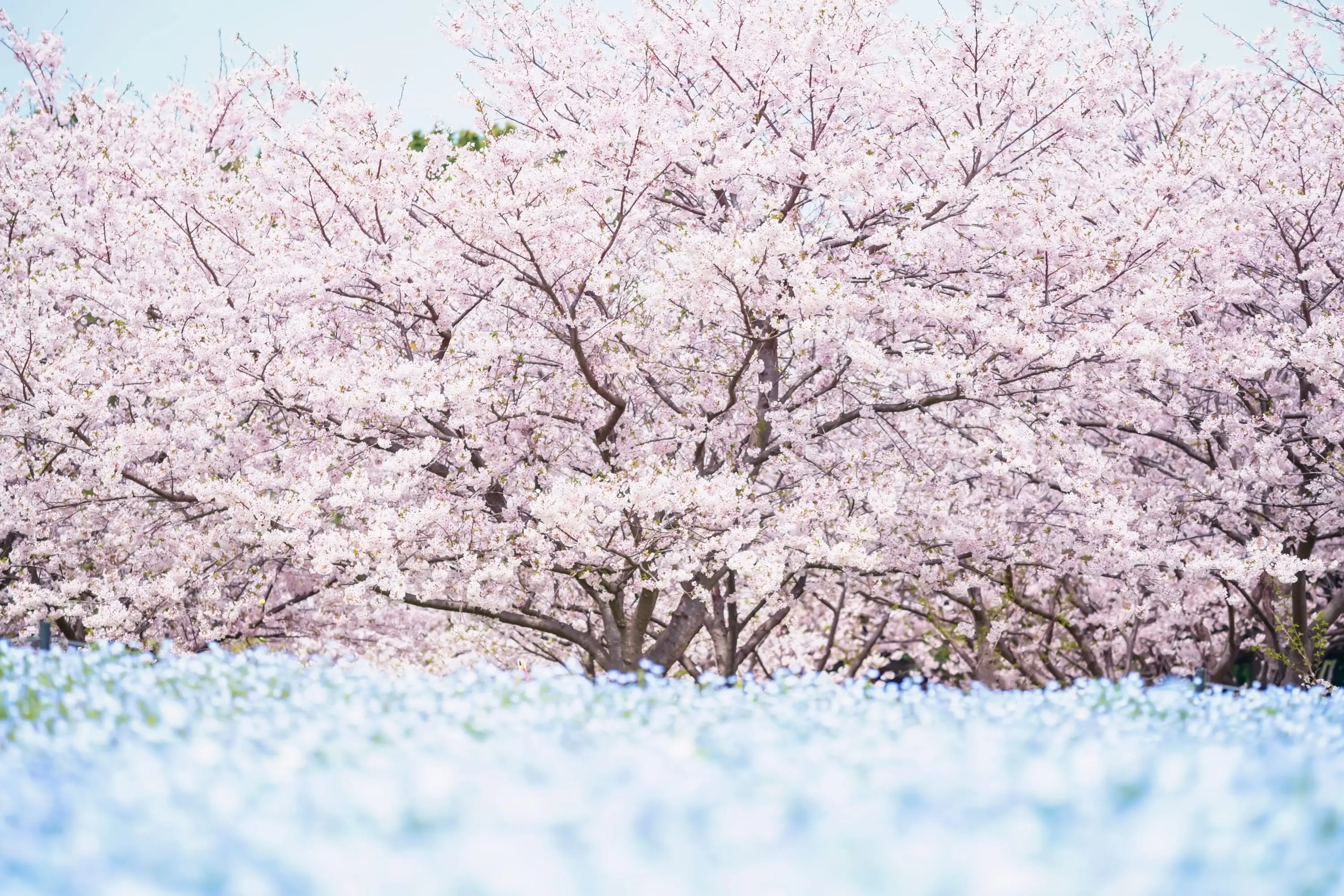
Uminonakamichi Seaside Park (Fukuoka Prefecture)
Renowned for its kochia bushes in autumn, this massive 350-hectare complex lets you combine nemophila viewing with other fun activities, including an amusement park and swimming pools. It’s also home to animals such as capybaras, kangaroos and red-faced spider monkeys. Although it has already passed, the pale blue nemophila creates a fantastic contrast with pastel pink cherry blossoms. Don’t miss the Uminonakamichi Flower Picnic event, where the 15,000-square-meter great lawn transforms into a sea of nemophila blooms, while seasonal activities and food stalls create a festive atmosphere.
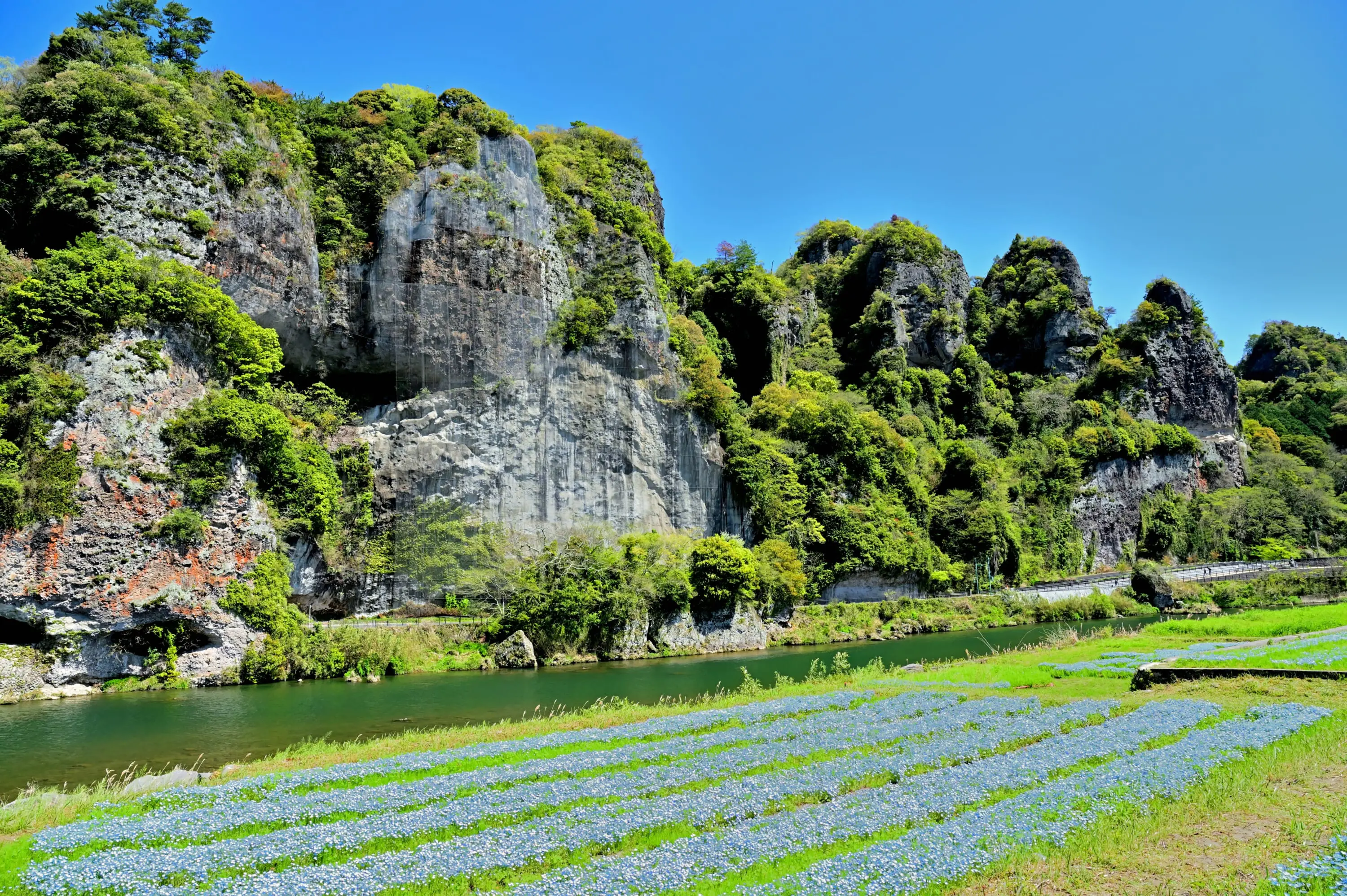
Yabakei Gorge Aonodomon Tunnel (Oita Prefecture)
For the adventurous history buffs, this magnificent site features a cave tunnel that was reportedly hand-carved by Yabakei Gorge Aonodomon Tunnel. Since 2012, nemophila have been planted along the opposing banks of the gorge that adorn the landscape from mid-April through to early May. The name Aonodomon, or “Blue Cave,” takes on added significance when surrounded by the blue nemophila flowers.
Address: Yamakuni, Nakatsu, Oita 871-0712
Opening Hours: Accessible at all times
Admission: Free
Access: About 30 minutes by bus from Nakatsu Station, get off at the Ao-no-Domon stop

